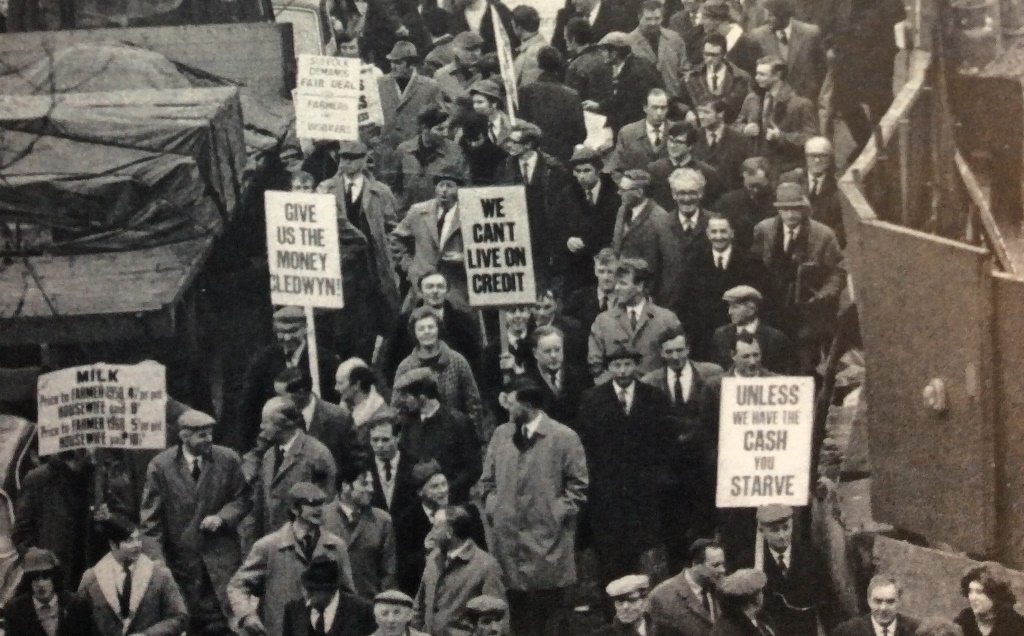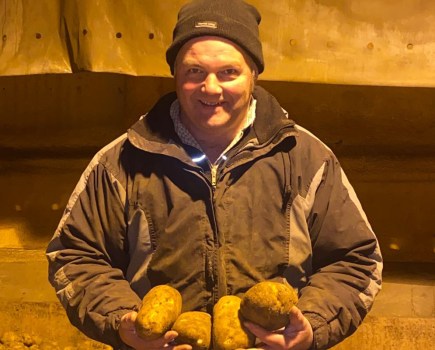 I’ve been trying to reassure myself that we made good progress with the drilling programme last autumn. The truth of the matter is I talked myself into thinking 2020 would be a golden year for spring cropping.
I’ve been trying to reassure myself that we made good progress with the drilling programme last autumn. The truth of the matter is I talked myself into thinking 2020 would be a golden year for spring cropping.
So now we have nearly half the farm undrilled and waiting for a benign spring to appear on the weather horizon. But as one storm after another trundles off the Atlantic, the chances of a peck of dust in March becomes more remote. Now Ciara and Dennis have done their worst, we wait in trepidation for something beginning with E. Possibly to become Storm Elijah and after that it’s something beginning with F and I’ll let you fill the blanks in there.
As a result of this, another F word can be heard being muttered in the farm office as I pore over spreadsheets. The F word this time being F for ‘fallow’. Instinctively I’m not a fan of fallow being brought up by a father who wanted every last square inch of the ranch seeded and weeded and harvested. But taking a leaf out of my grandfather’s book instead, I’m focusing on the benefits of fallow.
One advantage of the drenching the land has had in the past six months is the amount of blackgrass that has chitted making our spring land look like a carpet of verdant green. I’d like to think every blackgrass seed in the top six inches of the soil profile is no longer resting dormant to haunt me another year. Another attraction of fallow, given much of the land is waterlogged, is that the less traffic it gets the better.
But, of course, the other factor weighing over the fallow decision is prices which in turn determines the opportunity cost of not sowing a crop. A 6.5t/ha crop of spring wheat with a variable input of around £450/ha in my book needs a wheat price of around £150 to break even. Right on cue, as if there are dark market forces playing with my mind, the wheat price is now for creeping over the £150 mark.
Suddenly the fallow plan F becomes Plan B and I’m lured back into the crop production game. Sometimes in a pique of perversity it feels as if life would be simpler if crop prices were persuasively lower making the decision to fallow more straightforward. But no, suddenly a mirage of profit appears and I get drawn into dreaming about a perfect spring that proffers cracking spring sown crops selling for healthy prices and delivering a worthwhile margin. The grim reality will probably be smeared seedbeds followed by a May drought giving me paltry crops of less than 5t/ha with little margin. But where would we be without farmer optimism.
On the March

The last NFU rally 30 years ago put on the streets of London some plain speaking on the cash crisis farmers were facing. What will the farmer’s voice be saying about food standards at the Westminster rally, set for 25 March?
British farmers have never been as riotous as our continental counterparts. I remember being in an NFU contingent in a mass rally of European farmers in Brussels in 2016. As the French and Belgians set fire to the streets we looked on in horror feeling like the little boy with the brick in his hand in front of the broken shop window.
So the unveiling of plans by the NFU to hold a rally in Westminster in late March this year tend to bring out a bit of schizophrenia. Some of us seem to be worried it might encourage boorish behaviour on the streets of the capital which will turn into a PR disaster. Meanwhile others think it will be a bit too mild mannered and not get the publicity it needs. Hopefully what results will be a decent turnout so the farmer voice gets a hearing while we don’t overstep the mark in terms of what is seen as reasonable protest.
The last mass rally in London was in 1970 when the NFU were negotiating the price review talks. Press reports suggest it was a good-natured affair. I enclose a photo. I particularly like the placards that read ‘Cash or else’ and ‘Unless we have the cash you starve’. Now that’s what I call plain speaking.
Guy Smith grows 500ha of combinable crops on the north east Essex coast. @EssexPeasant




